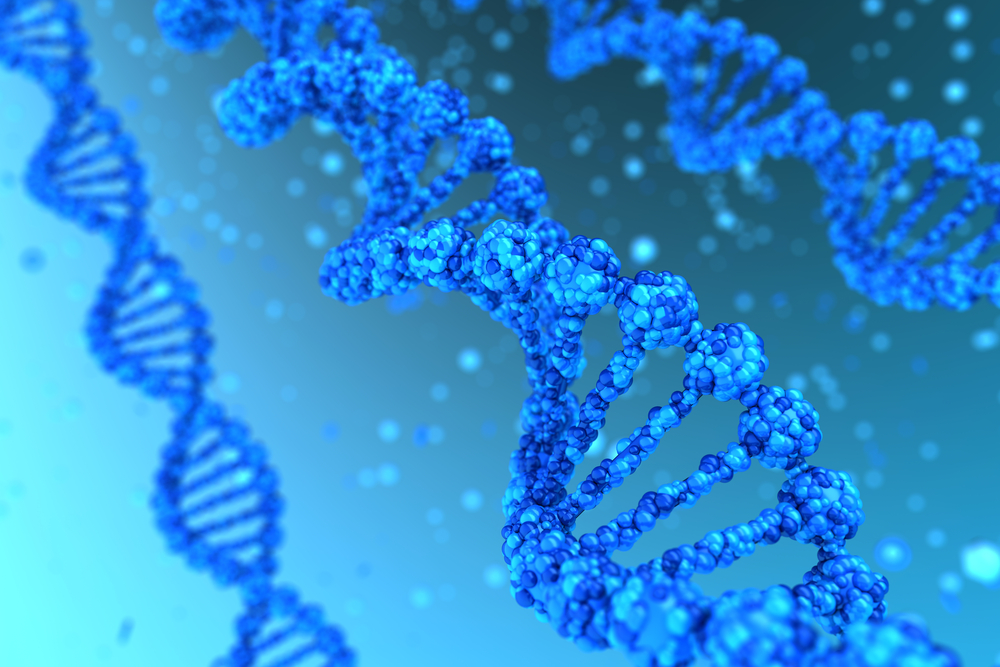Exon Skipping Dominates DMD Treatment, But What’s on Horizon?

With the recent approval of Amondys 45 (casimersen) by Sarepta Therapeutics, there are now four exon-skipping therapies available in the U.S. for eligible patients with Duchenne muscular dystrophy (DMD).
The others are Exondys 51 (eteplirsen) and Vyondys 53 (golodirsen), also by Sarepta, and Nippon Shinyaku’s Viltepso (viltolarsen) — all approved in the past five years and, combined, able to treat nearly 30% of all DMD cases.
But what makes these therapies special, and how well do they benefit these patients?
DMD is caused by the loss of dystrophin, a key protein for muscle strength, due to mutations in the DMD gene. The most common DMD-causing mutations involve the deletion of one or more of its 79 exons — sections of genetic information needed to make proteins.
Before being transformed into a protein, this genetic information is transcribed into messenger RNA (mRNA), an intermediate molecule used to guide protein production. Much like pieces of a puzzle, exons are translated and pieced together in the mRNA molecule.
However, the loss of one or more exons will, in most cases, break the ability of the remaining exons to link together properly, impairing the production of a working dystrophin protein.
Exon skipping therapy is meant to overcome this “inappropriate fit,” by forcing the cell’s machinery to skip one or more exons near the missing piece in the DMD gene’s mRNA, so the remaining exons do fit together — binding to produce a smaller, but functional, version of dystrophin.
This is achieved with antisense oligonucleotides (ASOs), lab-made molecules designed to be complementary to a specific region in the premature mRNA, altering the mature mRNA and the resulting protein.
In the case of exon-skipping therapies, ASOs bind to a region near the target exon in premature mRNA, preventing its inclusion in the mature mRNA, and subsequently its use in protein production.
As Duchenne patients have different exon deletions, the skipping of a given exon will not work for them all. But most DMD-causing deletions occur between exons 43 and 53, and exon-skipping therapies targeting this range increase the number of patients likely to benefit.
Exondys 51, the first disease-modifying therapy to be approved for DMD in the U.S. in 2016, is specific to patients with mutations amenable to exon 51 skipping — about 13% of all cases.
Vyondys 53 and Viltepso are both meant for those whose Duchenne is amenable to exon 53 skipping — 8% of cases — while the recently approved Amondys 45 is specific to exon 45 skipping (again, an estimated 8% of patients).
Sarepta is also working on improved versions of these ASOs, with the most advanced being SRP-5051 for patients amenable to exon 51 skipping. The company’s new ASO platform, called PPMO, has the potential to increase muscle cell entry and treatment effectiveness, while reducing dosing frequency.
Still, exon-skipping therapies are not a cure. Rather, they offer Duchenne patients a path toward a milder disease, one similar to Becker muscular dystrophy. In Becker patients, DMD deletions allow the remaining exons to still fit together, leading to a shorter but working version of dystrophin, and slower disease progression.
Another type of disease-modifying therapy, called stop codon readthrough, has been approved for Duchenne patients with nonsense mutations in the DMD gene — estimated to represent 10–15% of all cases.
This type of mutation results in a stop signal in the mRNA molecule that prematurely halts protein production.
Translarna (ataluren), developed and marketed by PTC Therapeutics, is a codon readthrough therapy approved in several countries, but not in the U.S., for patients with nonsense mutations.
The therapy, taken orally, is thought to make the cell machinery ignore and pass over the early stop signal, and continue the production of a full-length, working dystrophin protein.
PTC announced that it plans to discuss its Translarna program, which includes an ongoing Phase 3 clinical trial (NCT03179631), with the U.S. Food and Drug Administration (FDA) regarding a possible accelerated path toward approval.
Gene therapies ahead?
Gene therapies have been gaining interest across genetic diseases. They have the potential to target the underlying cause of single gene disorders such as DMD by providing a healthy copy of the mutated, disease-associated gene, to cells.
Most gene therapies use modified, harmless viruses to deliver the healthy gene, due to their heightened ability to enter targeted cells. However, viruses can only carry so much DNA — and the largest human gene, DMD, does not “fit” in any single virus.
Instead, several companies have been working on delivering a shorter version of the DMD gene — one containing the minimum amount of information needed to produce a shorter, but working, dystrophin protein — specifically to muscle cells.
Called micro- or mini-dystrophin depending on its length, the smaller protein is expected to lessen disease severity and improve patients’ muscle function.
The most advanced experimental gene therapies for DMD are Pfizer’s PF-06939926, delivering a mini-dystrophin gene, and Sarepta’s SRP-9001, delivering a micro-dystrophin gene. Both have reported promising data in clinical trials.
A single dose of either therapy, administered directly into the bloodstream, is expected to slow or stop the muscle wasting characteristic of DMD.
This type of therapy can typically only be given once, due to the body’s natural production of antibodies against the viral vector used to deliver the gene.






